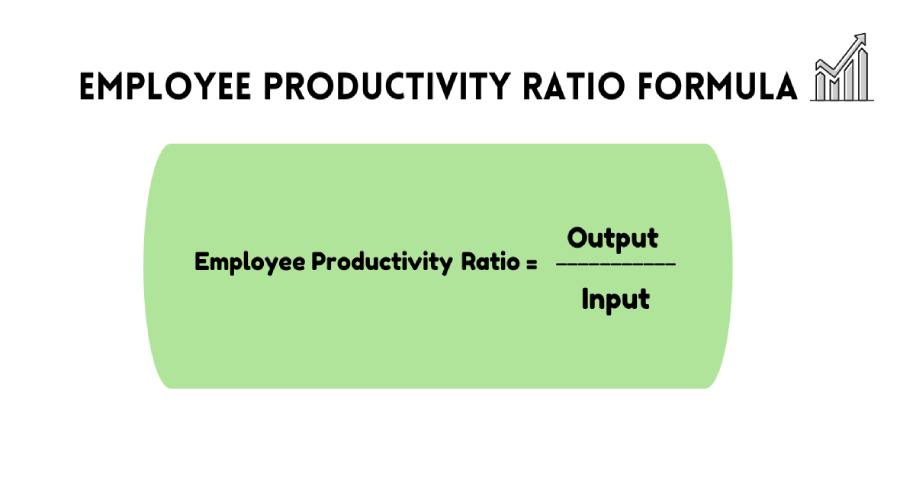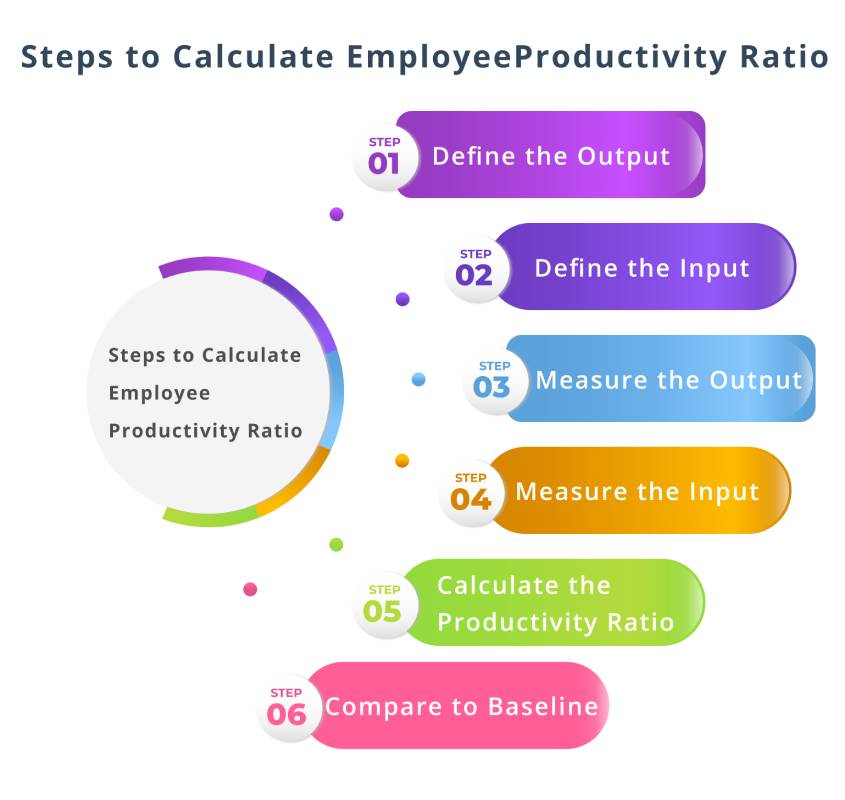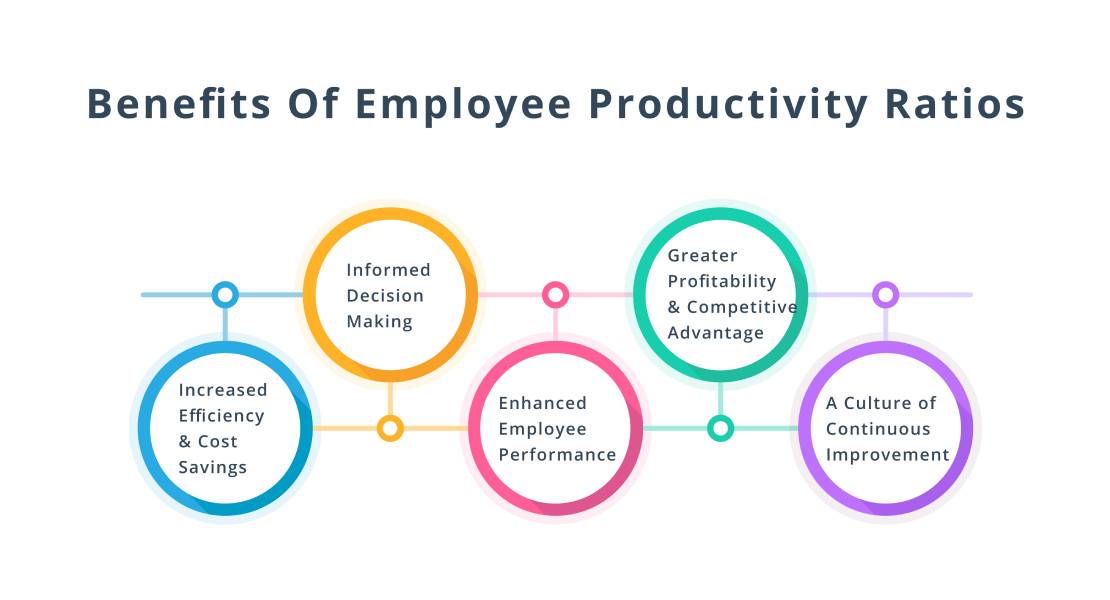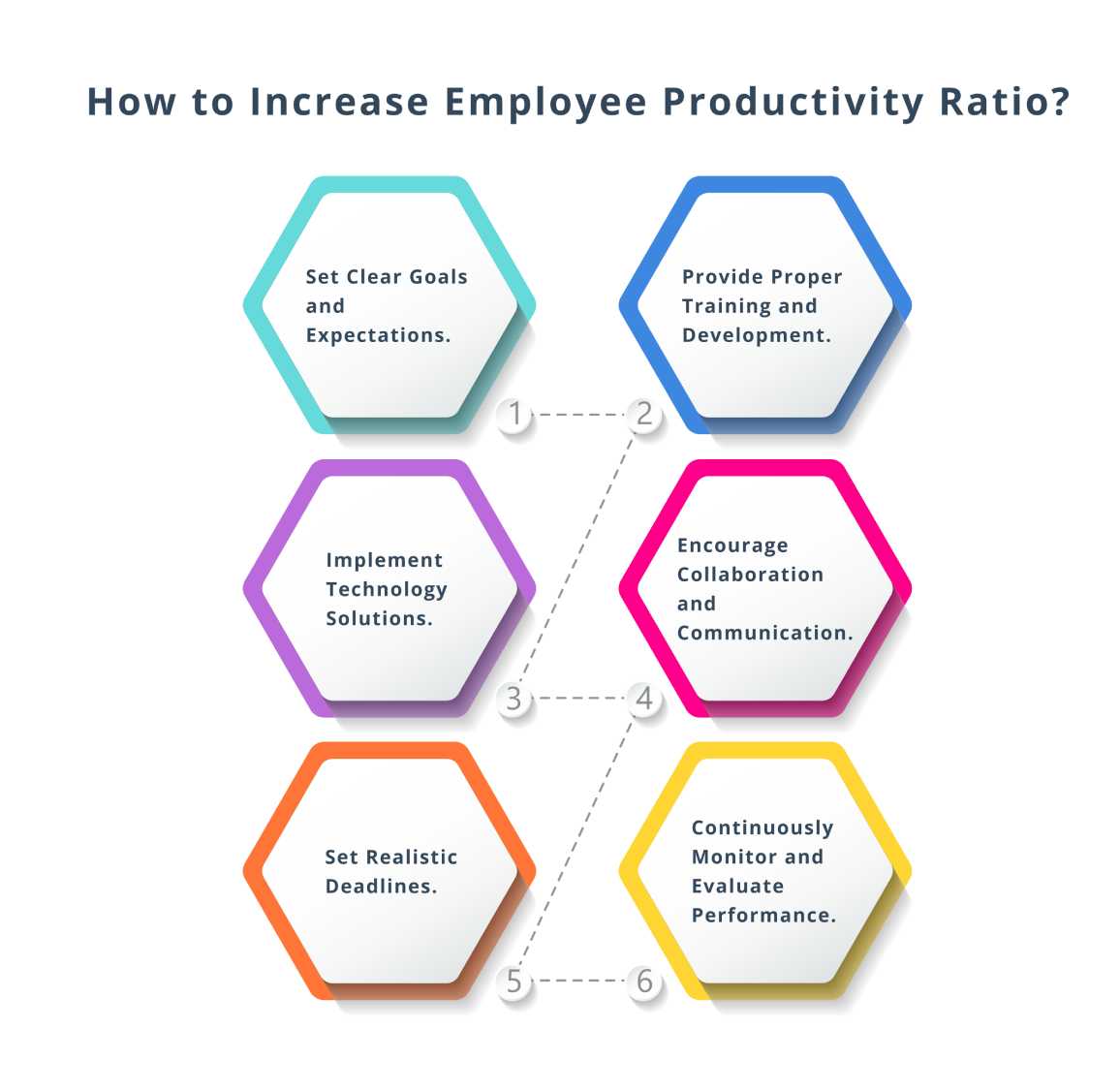In this blog, we will discuss the employee productivity ratio, a critical metric that can significantly impact your organization’s success. You might wonder how this ratio can be useful to you. Let me tell you it’s like the GDP of employee productivity. Yes, you heard right! It’s as essential to your workforce as GDP is to an economy. Without further delay, let’s dive into the productivity ratio and its perspective on employee productivity.
What is the Employee Productivity Ratio?
The Employee productivity ratio is a measure used to evaluate the efficiency of an employee in producing an output. This ratio is crucial for you to know how well resources are utilized within your organization.
Importance of Productivity Ratio in Employee Productivity
The Employee productivity ratio plays
an important role in assessing the
overall efficiency of an
organization or the performance of
the respective employees. Usually,
it directly relates to the
efficiency of the employees and the
effectiveness of how the resources
are being used efficiently.
By
utilizing this ratio, both the HR
and managers can pinpoint certain
anomalies and increase
employee motivation and job
satisfaction. At the same
time allocating available resources
wisely and planning for the future
effectively.
If the
productivity ratio is high, it
directly results in
increased employee
productivity.
Employee Productivity Ratio Formula
If you see the definition, you can grasp that the productivity ratio is an outcome of how much output we get from the resources we use.

For instance, if your team generated $100,000 in revenue (output) and worked a total of 2,000 hours (input), the Employee Productivity Ratio would be:
Employee Productivity Ratio = $100,000 / 2,000 hours
That equals $50 per hour of productivity. That means your company is generating $50 for each hour that your team works.
How to Calculate the Employee Productivity Ratio?
You understand the importance of the
productivity ratio, what next,
it’s simple you need to
calculate the productivity ratio of
employees.
There are mainly 6
steps involved in calculating the
productivity ratio of employees.

Step 1: Define the Output: First, you need to know what you want as output from your employees. The output must be defined first before you go to the next steps.
Step 2: Define the Input: In the first step, you have defined the output, now you need to finalise the resources you are going to use for the output. In this case, we take the work done by the employees as the input because we are calculating the employee productivity ratio.
Step 3: Measure the Output: In this step, you are going measure the progress of your output produced in your organization by your employees.
Step 4: Measure the Input: Now, you need to calculate how much input you’re using like the employee’s work done as the input. Measure how much you’re using or used.
Step 5: Calculate the Productivity Ratio: Now you have all the ingredients, let’s cook our delicious productivity ratios. Take the calculated input and output, then divide the output by the input. Then you get the productivity ratios.
Step 6: Compare to
Baseline: The story is
not completed yet, now we need to
compare it to the past year’s
productivity to understand whether
employee
productivity has decreased
or increased.
You know how to
calculate the productivity ratio,
the next question is where we use
this employee productivity ratio.
Where are the Employee Productivity Ratios Used?
Productivity ratios are used when
dealing with resource allocation, performance
evaluation, financial
analysis and strategic planning etc.
In these places, you get more
results if we consider the
productivity ratio.
Maybe
it’s a good time to talk about
the benefits of measuring
productivity ratios.
Benefits of Using Productivity Ratios
Let’s understand the benefits of measuring the productivity ratio of employees

- Increased Efficiency & Cost Savings: Suppose you can draw a line between your organizational performance and the financial performance of your company. That is how productivity ratios work their magic. If you follow productivity ratios, you can see where you could be doing things better, where you can cut out unnecessary steps and where you can save some time and money.
- Informed Decision-Making: Productivity ratios can be viewed as your crystal ball in the workplace, they offer a wealth of information about the performance of your employees that can help you make better decisions regarding hiring, resource, and organizational management. No more flying blind!
- Enhanced Employee Performance: Employees are a source of power and knowledge that should be utilized to the maximum. When they can quantify their productivity, then it makes them become responsible for their performance and work on the areas that they are lacking. Watch your team soar!
- Greater Profitability & Competitive Advantage: Those cost savings that we talked about before, can be translated directly into enhanced profits. In addition, when you have achieved optimum efficiency, you can out-compete your rivals, leaving them far behind.
- A Culture of Continuous Improvement: Measuring helps to understand where improvement is needed, it helps us to create an environment where continuous improvement is valued and pursued.
How to Increase Employee Productivity Ratio?
If you are facing a low employee productivity ratio, do not worry let’s discuss some techniques or methods to increase the employee productivity ratio.

1. Set Clear Goals and Expectations: Give your employees a clear target of goals and what you expect from them. So, the employees have clarity on what they need to do, which increases the employee productivity ratio.
2. Provide Proper Training and Development: The employee productivity ratio can increase when we have skilled employees, so it is necessary to provide training for the employees, so they can level up their skills.
3. Implement Technology Solutions: Now a days we are using everything on smartphones why don’t you think for measuring, we can use an employee productivity tracking software, which tracks employee activities, productive hours and non-productive hours and has automatic attendance, these features increase your efficiency by accurate results.
Time
Champ can be your best
selection if you want to increase
your employee productivity ratio. It
has the features of employee
productivity, monitoring, project
management, automated attendance,
task tracking, location
tracking, audio tracking,
insight dashboards, productivity
dashboard and more.
You can
find detailed explanations on the Time
Champ features page
4. Encourage Collaboration and Communication: Encourage your employees to be more interested in collaborating with other employees. And increase communication between the employees from all departments.
5. Set Realistic Deadlines: Deadlines can make employees aware of the timeliness so they can finish the tasks in time, decrease time wastage, and increase the employee productivity ratio.
6. Continuously Monitor and Evaluate Performance: It is necessary to monitor the progress of employees at every level so that we can evaluate the successes of the project without any distributions.
Conclusion:
It has been an exciting ride, from starting with what is the productivity ratio to how to increase the employee productivity ratio. What you take away from this blog is that monitor your productivity ratio so it can increase the success of your organization. Hey, don’t forget to try Time Champ to boost your employee productivity ratio.
Want to skyrocket your productivity ratio?
Transform your workplace with Time Champ!
Sign up for FreeBook DemoFrequently Asked Questions
There’s no one-size-fits-all answer to the ideal productivity ratio. It varies depending on factors like industry, organization size, and goals. The ideal ratio reflects efficient resource utilization and helps the organization achieve its objectives effectively.
An acceptable productivity rate varies by industry and organization but generally allows for efficient operations and goal achievement. It should meet or exceed industry averages and align with the company’s strategic objectives.
Low employee productivity ratios can result from unclear goals, poor management, insufficient resources, low engagement, and high stress levels. Addressing these issues can help improve productivity.






